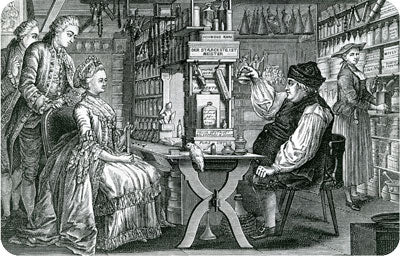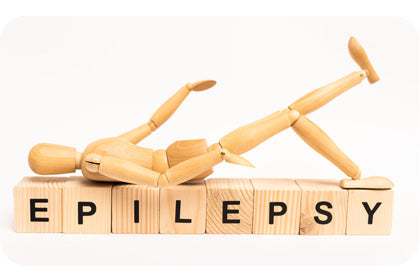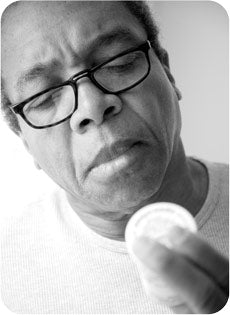Written by: JOE DOLCE
Concerns About CBD
Ask The Expert: Is CBD Safe?
Will it hurt my liver? Does it interfere with other drugs? Can it get you high? Can I trust what I read on the label? And more…
Contents:
CBD (cannabidiol)
It has gone from being a relatively unknown substance 10 years ago to a ubiquitous health and wellness product for sale in gas stations, corner grocer’s and thousands of websites. Because it is not properly regulated in the US manufacturers can make all sorts of breathless claims about what CBD can do. It helps you sleep! Stops epileptic seizures! Eases your dog’s arthritis! Erases your frown lines! And while some of these claims may be true for some people in certain circumstances – cannabis derivatives have definitely been shown to have a number of potential health benefits – many of them are vastly inflated. It’s no surprise, then, that in the last year a backlash against CBD has started to bubble up in the mainstream media. Perhaps you’ve read reports about the “toxicity” of CBD or its potential to “damage our livers in the same ways as alcohol and other drugs”, or that it is dangerous to take with other meds like Tylenol. You needn’t worry if you’re using CBD as a wellness product – none of these claims are supported by valid scientific studies but they are worth addressing to set the record the straight.
“...CBD has started to bubble up in the mainstream media”
The fact is: CBD is a very safe product, likely more safe than prescription or over the counter medicine or any natural supplement you might be taking now. About 3,000 deaths are attributed to aspirin each year. No human or animal as ever died from an overdose of CBD (or THC for that matter). And while there are no large scale clinical trials proving the efficacy of CBD, over the years considerable amounts of data have been accumulated by patients and clinicians to know that it can treat symptoms for numerous conditions – at the right dose. It’s fair to say we know some things about CBD, but there’s more to learn. This post will explore the risks of using CBD so that you can use it with confidence.
CBD (Cannabidiol) is non-intoxicating and found in every part of hemp and cannabis plants, from the resinous flower down to their roots. Over the centuries, history has shown how cannabis and its many properties were being used medicinally.

In more recent history, scientists and doctors have been researching and confirming CBD’s therapeutic effects. Studies have found CBD to be safe, non-addictive, and just one of the plants' 140+ “cannabinoids”.
A few studies showed that it also helped alleviate some symptoms of schizophrenia, depression and seizure disorders but the study sample sizes were small and conducted in countries outside of the US, so they were largely ignored.
Here's some more background: CBD was discovered in 1940, and by 1963 its molecular structure had been identified by the Israeli chemist Raphael Mechoulam. Because CBD causes no psychoactivity and reduces the effects of THC (the psychoactive component of cannabis), North American growers in the 1980s and 1990s had begun to breed CBD out of the plant. These growers were only interested in producing cannabis that resulted in powerful highs. CBD was of no use to them in that regard.
The first clues that CBD had major health benefits, namely that it might suppress epileptic episodes, came from a small clinical trial conducted and published by Dr. Mechoulam and his colleagues in 1980. However, it would take another decade before growers and medical professionals started to take notice. In the late 1990s, when California legalized medical cannabis, more growers began exploring the therapeutic properties of the plant. They recognized how cannabis strains with higher CBD levels were quite effective, and found these strains eased their aches and pains or made them more calm. At the same time, more wellness providers and doctors around the world started investigating CBD and CBD-rich strains.
"There’s a growing body of evidence that CBD can treat other illnesses besides seizure syndromes..." ~TIME March 2019
Awareness of CBD hit the big time when Dr. Sanjay Gupta featured Charlotte Figi, a 5-year old girl – RIP (April 7, 2020, aged 13) – with a severe form of epilepsy called Dravet Syndrome, in his 2013 CNN documentary Why I Changed My Mind On Weed. CBD helped Charlotte reduce the number of weekly grand mal seizures she was having from 300 to none. This documentary was seen by millions of people. CBD’s popularity continued to spike once other states like Colorado and Washington passed adult use laws, but it was the passage of the 2018 US Farm Bill that allowed manufacturers to extract CBD from hemp crops that helped to make it a ubiquitous consumer product.
This is confusing terminology. From a scientific perspective, cannabis comprises thousands of varieties called ‘strains’, and all hemp strains belong to this larger ‘cannabis’ species. So, is all hemp cannabis? Yes! But not entirely: In practice, and according to some legal definitions, hemp is considered to be the strains of cannabis that contain a very small amount of THC (less than 0.3% in the U.S. and 0.2% in EU.) These low THC strains usually have less flowers, and are more stalky and fibrous, making them perfect for industrial use in thousands of applications including ropes, fabrics, paper, and packaging materials. On the other end are cannabis strains, boasting high THC content with full flowers, cultivated solely for medical or adult consumption, and not used in industrial applications.

CBD is a molecule. It’s exactly the same in both hemp and cannabis strains. However, the legal framework in the U.S. and in Europe allow CBD to be sold only when it’s extracted from hemp strains. (Laws surrounding hemp, marijuana and CBD are in constant flux. For concerns about the laws in your area, click here.) The easiest way to think about the two types of CBD are this: CBD from cannabis is legal in states that allow adult use consumption, but not legal in other states. CBD from hemp with a THC content of 0.3% or less is legal in all 50 United States, and can be shipped by mail. CBD from hemp, as millions of patients can attest, is excellent medicine.
"From a scientific perspective, cannabis comprises thousands of varieties called ‘strains’, and all hemp strains belong to this larger ‘cannabis’ species."
The important thing here is to understand that CBD on its own (as a molecule) is not as effective. When we capture the other compounds found in hemp and cannabis plants their therapeutic benefits come alive. After the extraction of compounds like terpenes (a quick guide to terpenes), CBD, and other beneficial cannabinoids, they can be blended back into the formulas; a technique that we, at Wonderfeel, are pioneering.
According to preliminary research studies, CBD has been shown to exhibit a number of restorative qualities.* Patients have been using CBD to help treat a number of illnesses including Parkinson’s disease, Crohn's disease, certain types of epilepsies, and a muscle disorder called dystonia. More studies are needed on CBD and its potential with these varied conditions, yet as researchers work toward finding definitive answers, their initial results are promising in the following areas;
• Helps with pain management
• Reduces inflammation
• Alleviates stress and anxiety
• Promotes sleep
• Reduces vomiting and nausea
• Neuroprotective (protects the brain)
• Antibacterial properties
• Promotes immune system function
• Reduces muscle spasms
• Promotes bone growth
• Reduces blood sugar levels
• Improves skin conditions
• Promotes heart health
• Improves cognition/memory
*Please note that representations regarding the efficacy and safety of CBD have not been evaluated by the Food and Drug Administration.
There are two distinct groups of people using CBD. The majority of people use it for wellness – to reduce inflammation and to treat chronic conditions like pain, insomnia, and stress. A small subset of patients use extremely high doses (under doctor supervision) along with other medications to treat very severe illnesses. Chances are you fall in the wellness group – that’s important to bear in mind when considering risks and possible side effects. A lot of the scaremongering around CBD fails to take this distinction into account.
In 2018 the UK-based GW Pharmaceuticals won FDA approval to release a CBD formula called Epidiolex for severe epilepsy. It was the first cannabinoid medicine to go through clinical trials and win approval to treat rare forms of the disease, much like the Dravet Syndrome that Charlotte Figi suffered from.

The in-depth results of those clinical trials form the factual scientific base surrounding much of what we know about the side effects of CBD. In summary, elevated liver enzymes were found in a small percentage of the children (5-15% who were given thousands of milligrams of CBD in conjunction with the other anti-seizure medications they were already taking). Remember that this finding refers to extremely ill people using extremely high doses of CBD along with other medications to treat rare diseases. It represents a tiny subset of the general population who use CBD for severe illnesses.
So how did this finding turn into a mainstream meme that has everyday users worried about the dangers of CBD? The short answer: Shoddy science and sloppy reporting.
"The in-depth results of those clinical trials form the factual scientific base surrounding much of what we know about the side effects of CBD."
One year after Epidiolex won FDA approval, scientists from the University of Arkansas in Little Rock published a very questionable study in the journal Molecules. The conclusions they arrived at were outrageous, but they gave birth to several myths about CBD.
The study was conducted on only 6 mice, who were force fed massive doses of CBD (2500mg per kilogram of body weight). These megadoses are greater than any animal or human would ever take. The researchers also administered CBD in a hexane solvent. Hexane is a neurotoxin and the concentration was so strong it would not be legal to sell. The authors then reported that 75% of the mice died. One doesn’t need an advanced degree in mathematics to recognize that 75% of six equals 4.5. Adrian Devitt-Lee, a research chemist at the University College of London and chief science writer for Project CBD, called the scientists to ask about what ever happened to the one-and-a-half living mice, his calls went unanswered.
"The authors then reported that 75% of the six mice died. Considering 75% of six equals four and a half, one has to wonder what happened to the living half of the dead mouse?”
Why the authors gave the mice this enormous amount of CBD confounds most researchers. The authors based their decision on a complex concept called allometric scaling, which is a way of estimating drug doses from animals to humans. Allometric scaling is typically used when scientists don’t know the correct dose in humans, but dosing of CBD is not a mystery. We have a tremendous amount of evidence from the Epidiolex studies and from other patients, so the logic in using this abstract formula is dubious at best. That’s putting it kindly. Devitt-Lee calls it “pernicious investigator bias…calculated to spark fear.”

The real trouble began when this tiny, flawed study was propagated in an article by Mike Adams, a writer for Forbes. Not only did Adams fail to question the study’s methods, but he made breathless extrapolations from their data, such as “Regardless of your feelings on this particular study, it is hard to argue with dead mice,” and more shockingly, “this substance could be damaging our (italics mine) livers in the same way as alcohol and other drugs.”
The bottom line? People who are using small to medium amounts of CBD every day for wellness and other non-life-threatening conditions have little to fear. The most commonly reported side effects at consumer-available strengths are sleepiness or drowsiness, decreased energy, trouble concentrating, stomach pains, or diarrhea.
“15-30 mgs of CBD three times a day is generally safe,” concurs Dr. Michelle Shuffett, VP of Scientific Research and Communications, Columbia Care, one of the largest dispensaries in the US. A 2011 review on the safety and side effects of CBD found that continuous use of CBD, even in doses as high as 1,500 mg a day, is tolerated well by humans.
There is one more interesting twist that all users should be aware of when using cannabinoids: High doses of CBD doesn’t necessarily mean better or stronger results. Cannabinoids are “biphasic,” which means that a high dose could cause the opposite response of the low dose.
"Everyone's body responds differently..."
Take drowsiness for example: at a low dose (20 mgs or less) you might get a boost of energy, but a higher dose (30-50mgs) could calm you. Everyone’s body responds differently, and that’s largely because everyone’s endocannabinoid system (ECS) is different. “That’s the beauty and the frustration of CBD and all cannabinoid medicines,” says Dr. Shuffett. “They are personalized experiences. Everyone metabolizes and responds to CBD differently, so a dose that works for you may not work for someone else.”
Along with ‘liver damage’, other concerns about CBD have been mentioned. Here we’ll explore them.
Some people report feeling lightheaded or less able to concentrate when using CBD. This makes Dr. Shuffett wonder what they are actually taking. If CBD is causing lightheadedness, difficulty concentrating or feeling slightly high, it’s possible that the product might contain more THC than the 0.3% allowed by law. Again, because CBD formulations are not properly regulated, product quality can vary greatly. A number of studies have examined the contents of bottles vs. what the label says. At least half of them do not contain what the label promises. Some had higher amounts of THC, some had little or no CBD, a few even contained pesticide residue. It’s this lack of transparency that consumers should be most concerned about.

“I would never buy anything if the lab results are not posted online...period,” says Dr. Shuffett. Many manufacturers are now including QR codes on their labels which link directly to a company’s lab tests. This is the surest way to know what is really in the product you purchased.
Here’s a little science to set the stage: Cannabinoids are metabolized by a family of liver enzymes called the Cytochrome p450, a fancy term for enzymes that help metabolize many medications. When these enzymes get activated they metabolize drugs more quickly, meaning there’s less of that medication in your body for less time, and may not be doing its intended job. For example, if you’re taking an antibiotic, these enzymes can amplify, chewing through the antibiotic more quickly, thus resulting in less available medication to fight infection.

So when CBD is combined with certain other drugs, it could possibly change the way those drugs are metabolized. Be sure to consult your physician if you are taking any prescription drugs. Here are the other drugs you might want to keep an eye on if you’re taking CBD.
The majority of sleeping aids have not been linked to liver injury. The bigger concern is this: If CBD makes you drowsy and you combine it with muscle relaxers or sleep aids you’ll likely have an increased effect, which could be a problem if you’re driving or operating machinery.
The same journal that published the flawed megadosing mice study published a similar article that whipped up fears about CBD and Tylenol (Acetaminophen). Again, the question comes down to dosage. The level of CBD employed in this study far exceeded what any human would ever take. In addition, acetaminophen by itself puts significant stress on the liver. If you are using large doses of Tylenol your liver is already going to be stressed. If your healthcare provider or pharmacist is educated about cannabinoid medicines, he or she might be able to help you understand or predict any potential interactions.
Researchers at the Universities of Michigan and Florida showed that THC, CBD, and cannabinol (CBN) all inhibit enzymes in the liver that activate or inactivate drugs that regulate blood pressure, as well as the ADD drug Ritalin. An interaction with high-dose CBD could be problematic, so be sure to consult with your healthcare provider if you’re in this situation.
Pregnant women throughout history have used cannabis products, but there are no conclusive studies showing positive or negative effects of using CBD while pregnant. Most healthcare providers will counsel pregnant women to avoid anything unnecessary to minimize risk. Ultimately, it is your decision. If you have any concerns about using any medication while pregnant or breastfeeding, talk to your doctor.
Clinicians report that patients generally need to use CBD daily for 2-4 weeks before they feel any effect. Others feel it working immediately. Listen to your own body. While some clinicians suggest that CBD stores up, and that over time you’ll need less to get the same therapeutic effect, the jury is still out.
The clinical studies of Epidiolex show a promising finding when it comes to the question of withdrawal symptoms after continuous use of CBD: “In a human physical dependence study, administration of cannabidiol (CBD) 1500 mg per day to adults for 28 days did not produce signs or symptoms of withdrawal over a 6-week period following drug discontinuation. This suggests that cannabidiol does not produce physical dependence.”
In a press release approving the CBD prescription-based drug Epidiolex, an FDA warning referenced high doses of CBD, going up to about 1600 mg per day for an adult who weighs 175 lbs. It goes on to read, "As is true for all drugs that treat epilepsy, the most serious risks include thoughts about suicide, attempts to commit suicide, feelings of agitation, new or worsening depression, aggression and panic attacks." We have not come across any other CBD studies supporting this cautionary statement.
Some classes of drugs should be monitored when taking large doses of CBD. This article by Adrian Devitt-Lee breaks it down in even more exacting detail. In brief, people using high doses of anti-seizure medications or blood thinners should check with their healthcare providers before adding a high dose of CBD into their medical mix. People who use medications that might make them sleepy should be mindful of CBD use, and whether it's further affecting their alertness.

But for most users the biggest concern with CBD is not knowing whether the label accurately reflects what’s in the bottle. This is what happens without regulatory oversight. Once there is a regulatory framework everyone will feel more confident about using CBD to find relief from what ails them.
If you’re new to CBD, you may be puzzled by the variety of different names. Trust, you are not alone. These variations are best described as this: At one end of the ‘spectrum’ you’ll find full-spectrum CBD. At the opposite end is CBD isolate, which is simply the CBD molecule, and according to experts, thought to be not as effective on its own.
So, are full and broad spectrum CBD the same? NO. Are they similar? YES. They both contain numerous cannabinoids, flavonoids, and terpenes. But with one, very important difference; Full Spectrum contains a trace amount of THC (less than 0.3%), and Broad Spectrum has none (0.0%).

Then you have Distillates and Isolates. When it comes to these two, they are quite different. Distillates can have a whole host of beneficial cannabinoids and other plant extracts whereas CBD Isolate is a standalone, stripped of everything else.
We’ve put together a brief article that digs a little deeper into the various forms of CBD.
CBD comes in a dizzying array of products – to name a few; water, beer, chewing gum, body butters, lube and bath balms. Our vote for the most ridiculous product is a CBD infused pillowcase. The following list breaks down the different forms CBD can take. It explains methods of administration, how each of these affect onset times (time it takes for CBD to get into your bloodstream), and how long the effects will last.
"Our vote for the most ridiculous product is a CBD-infused pillowcase."
Inhalation: Increasingly, growers are producing hemp varieties with high CBD content. These flowers can be inhaled through a vaporizer or smoked. This is an easy form of self-administration. The effects take hold immediately – in less than three minutes – and can last for several hours.
Oral Tincture or Oil: Using CBD orally is very common at the moment. It absorbs via the membrane lining inside our mouths and hits the bloodstream quickly, in 15-30 minutes. Effects can last 2-4 hours.
Ingestibles: When ingested as a gummy, capsule, tablet, or in food, CBD can take up to two hours to hit the bloodstream, but the effects will last longer, about 6-8 hours. When taking CBD orally, be sure to take it with a fatty substance like yogurt, butter or milk since fat increases the speed and volume of uptake into the bloodstream.
Topical: CBD also comes as a cream, salve or oil and can be applied directly to the skin to ease achy joints or soothe burns and rashes. Effects are immediate but not long lasting. CBD topicals can be applied as frequently as needed.

Bath Balms. Another nice way people use CBD is in the bath to further relaxation. Some well-informed parents are using bath bombs to help fidgety children (or themselves) relax!
These statements have not been evaluated by the Food and Drug Administration. These products are not intended to diagnose, treat, cure, or prevent any disease.




Share Your Thoughts
We won't share, sell or publish your email address.